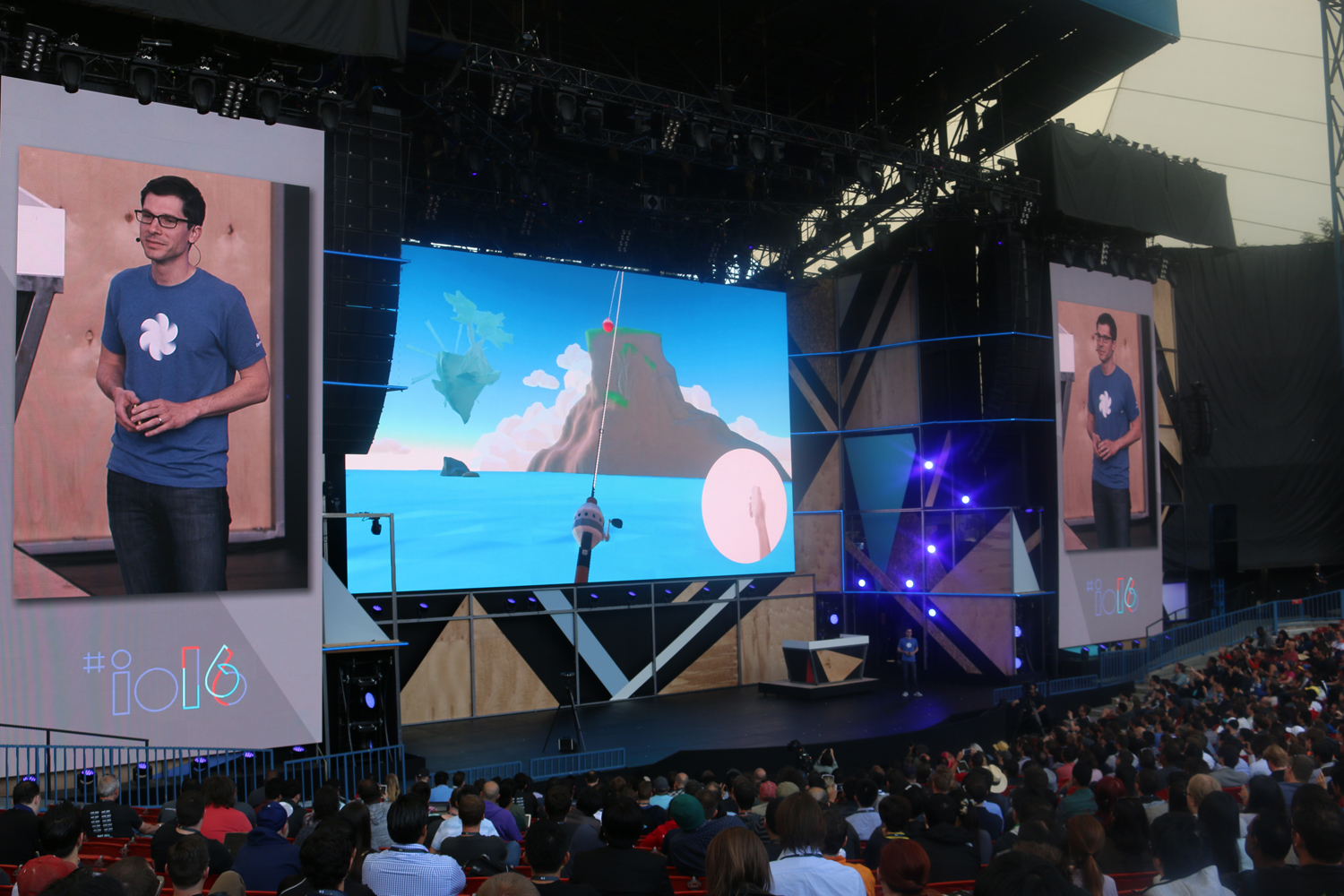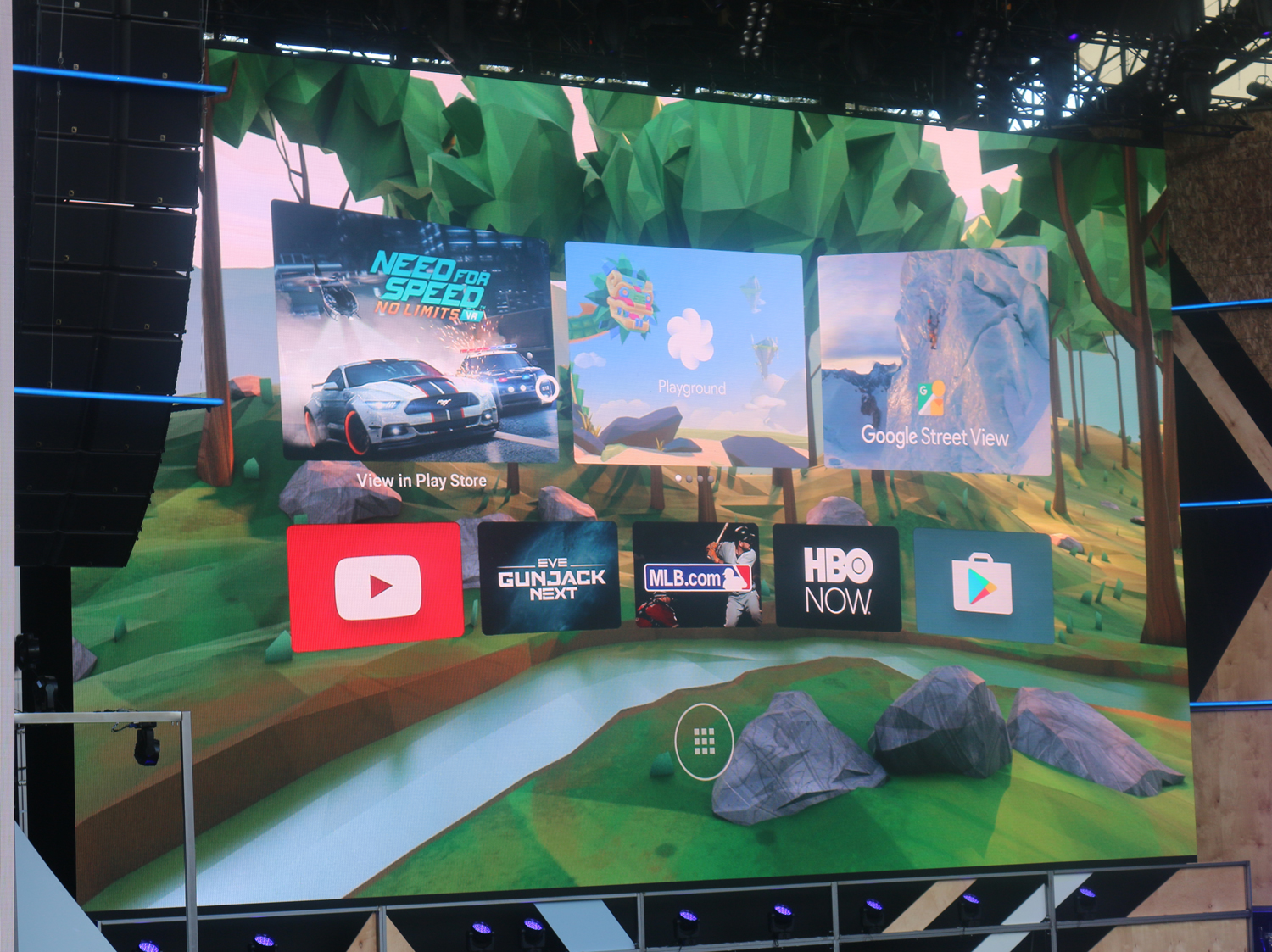Inside Google's Daydream and Its Plan to Rule the VR World
Google's Daydream VR platform is about creating better experiences through advanced phones, a motion controller and headsets--including one of its own.
MOUNTAIN VIEW, Calif., — Virtual reality emerged as the star of the show at this year's Google I/O developers conference, highlighted by the new Daydream platform that promises more mobile VR experiences. After taking the wraps off Daydream on the conference's first day, Google went into more detail on just what we can expect when the first Daydream-ready phones and headsets roll out later this year. And that includes a headset from Google itself.

The goal for Daydream, explained Google vice president for virtual reality Clay Bavor, is to create the kind of experience where your senses line up to create the feeling that you're really someplace else. "VR has the potential to connect people to this kind of information, experiential information in a profound way," Bavor told attendees during a VR session at I/O today (May 19).
So how does Daydream deliver on that potential? Here's how Google hopes to pull it off.
Google Will Make Its Own Daydream Headset
In addition to putting out specs for Daydream-ready phones, Google has released a reference design for the Daydream headset and controller that its partners will use to make the hardware. But they'll have some competition: Bavor says that Google is going to make a headset and controller of its own.
VR-Ready Phones Will Meet High Standards
Google's working with a number of phone makers to create Daydream-ready devices: In the opening keynote, Bavor specifically mentioned Samsung, HTC, LG, Huawei, ZTE, Asus and Alcatel. Those phones are going to sport some pretty powerful specs to cut latency to less than 20 milliseconds — a key to delivering the kind of "you are there" experience Google is aiming for with Daydream.
MORE: Best VR Headsets for Phones and PCs
To that end, every Daydream-ready phone will have a low-persistence display, according to Google product manager Nathan Martz. The phones will also be powered by high-performance chips and feature high-quality sensors. The idea behind the Daydream-ready standards, Martz says, is to assure app makers that whatever software they build will be able to run on devices that meet Google's specs.
We should find out just how powerful these phones are fairly shortly. Google expects several Daydream-ready phones to be available in the fall.
Sign up to get the BEST of Tom's Guide direct to your inbox.
Get instant access to breaking news, the hottest reviews, great deals and helpful tips.
Daydream's a Part of Android N
As Google prepares Android N for a fall release, Martz says the company is working to make sure it's "a great OS for VR." That means Android N will offer low-latency support and high-quality head tracking; the latter feature will make looking around with a VR headset on feel as natural as it does in the real world.
Google is also building key components of the the Android interface in VR. That means when you get a call or text message as you're exploring a virtual world, the alert will render in stereo, allowing you to decide whether to respond to the message or remain in VR.
Daydream's Controller Rules Everything
To even enter a virtual world in Daydream, you'll need to have the Daydream controller in your hand. That's to ensure that developers will know exactly what kind of controller users will have, thus making it easier to create apps for Daydream.
The controller features a trackpad at the top to help you find your way around a Daydream experience. There are also two buttons — one that's open to developers to use however they want in their apps and the other that Google reserves as a home button.
As simple as the controller looks, it should be able to preform a number of different functions. Martz described it as precise enough to use as a laser point, while also being responsive enough to swing like a racket, as you would with one of Nintendo's Wii controllers.
Google Plans to Help You Discover VR Apps
Daydream Home is a home screen that will come with every Daydream-ready phone and be the first thing that people see when they head into VR, according to Google lead designer Lindsey Metcalfe. The screen will display the apps you have, but it will also prominently feature preview windows for other VR apps. The windows are fairly large, which gives users the chance to peer in and get a sense of what a particular app offers, Metcalfe says.

App previews won't be like the ones you experience now on Google Play. In Daydream, they'll sport VR-specific features such as 360-photosphere previews. Google will also include a motion intensity rating on VR apps, so that users prone to motion sickness will be able to steer clear of apps likely to make them queasy.
You don't necessarily need to be in VR to grab VR content. Using your phone in the real world, you'll be able to download VR content and queue it up for later, Google says.
Philip Michaels is a Managing Editor at Tom's Guide. He's been covering personal technology since 1999 and was in the building when Steve Jobs showed off the iPhone for the first time. He's been evaluating smartphones since that first iPhone debuted in 2007, and he's been following phone carriers and smartphone plans since 2015. He has strong opinions about Apple, the Oakland Athletics, old movies and proper butchery techniques. Follow him at @PhilipMichaels.

